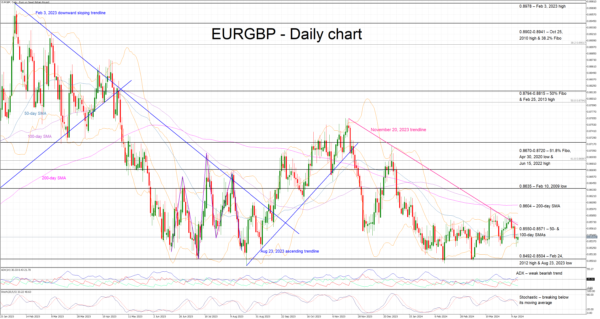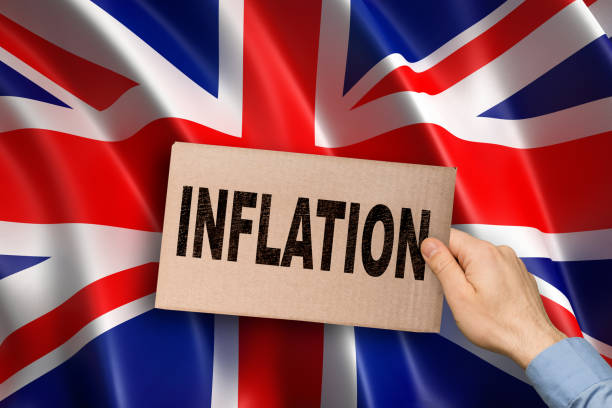- BoE’s determination could be tested if this week’s CPI prints surprise on the upside
- Pound could benefit from a strong set of data this week
- Employment data will be released on Tuesday; the inflation report on Wednesday
Inflation in the spotlight
At the last Bank of England meeting, which is still relatively fresh in the market’s mind, the Committee maintained its balanced approach. The UK economy is navigating through rough waters with the upcoming general elections expected to add further fuel to the fire. Interestingly, the UK appears to exhibit signs both from the US and euro area economies.
It is experiencing the strong inflation seen in the former and the weak growth present in the latter. BoE’s inherited dovishness has not been openly expressed yet, but this week’s data could tip the balance in favour of the doves. In the meantime, at least six members are scheduled to be on the wires including Governor Bailey and known hawk Haskel.
Labour market data on Tuesday
On Tuesday, labour market statistics and average earnings data for February will be published. The latter has been a real headache for the BoE doves as, despite the deceleration seen from the 2023 highs, the yearly growth in average earnings remains incompatible with a central bank willing to cut rates. The market forecasts point to a small easing to 5.8% for the excluding bonuses indicator, which would be another positive sign for the doves.
The main reason for the elevated earnings prints is the tightness of the labour market. The official unemployment is expected to climb to 4%, just a tad above its recent all-time low level, with the market paying more attention to the more up-to-date claimant count change. A large jump in March could tentatively show an easing in labour demand. However, this progress is very gradual and might not pick up considerable speed due to the post-Brexit restrictions imposed by the UK government.
Could inflation surprise on the upside?
At 06:00 GMT on Wednesday the March inflation report will be released. Progress has been made on this front as headline CPI dropped in February to its lowest rate since October 2021 with the core indicator proving much stickier. The market is looking for another easing to 3.1% and 4.2% respectively but there might be some sizeable upside risks following last Wednesday’s strong US inflation report.
Confirmation of the market forecasts would appease the BoE doves and bring forward the chances of the first rate cut from September to August. This move could pick up speed if Wednesday’s producer price index results surprise on the downside and thus point to further easing in inflationary pressure during the rest of 2024.
Pound could benefit from a stronger inflation report
The pound has been anxiously trying to take advantage of developments elsewhere, but it has failed to make any concrete gains lately. The ongoing dollar strength has pushed the pound/dollar pair to the lowest level since mid-December 2023 while euro/pound is still hovering close to its recent 2024 lows.
With the ECB seen ready to announce a rate cut in June, a strong set of data this week could push the euro/pound pair towards the 0.8492-0.8504 area and potentially open the door to a new 20-month low level.
On the flip side, weakening inflationary pressure and as loosening labour market could convince the market that a BoE rate cut is closer than currently anticipated and hence allow pound bears to push the euro/pound pair towards the November 23, 2023 downward sloping trendline at 0.8566.










